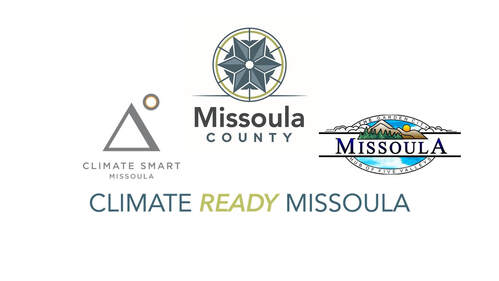3 minutes or less? Here's what you need to know.
1. Missoula County's climate is changing.
Missoula County's summers are expected to become hotter and drier. Winters and springs are expected to become warmer and wetter. More precipitation will fall as rain instead of snow, especially at low elevations.
2. Missoula County will be impacted by climate change.
We are already experiencing the impacts of climate change, with longer wildfire and wildfire smoke seasons, extreme summer heat, prolonged drought, spring flooding, and greater variability. These climate impacts affect every sector of our community, including the ways in which we grow our food, protect human health, manage ecosystems, build our buildings, produce energy and design our businesses.
3. There are things we can do to manage the unavoidable changes that are already here.
While climate change is a global challenge, its impacts are experienced at the local level, and it falls to local communities to address them. Climate Ready Missoula identifies 29 goals and 77 strategies that we can pursue to build resiliency in Missoula County.
4. The Climate Ready Missoula plan is the result of nearly 2 years of work and the contributions of hundreds of Missoulians.
From the summer of 2018 to the spring of 2020, Missoula County, Climate Smart Missoula, and the City of Missoula jointly lead a climate resiliency planning process, "Climate Ready Missoula: Building Resiliency in Missoula County." It has been developed with the participation of hundreds of local organizations and individuals via two large stakeholder workshops, online surveys, and numerous public meetings. Climate Ready Missoula was inspired by the Climate Ready Communities program developed by the Geos Institute. In May of 2020, the plan was adopted as an issue plan of the Missoula County Growth Policy and the City's Our Missoula: City Growth Policy 2035.
5. Climate Ready Missoula is an adaptation plan, but it does not minimize the importance of mitigation.
Efforts to address climate change fall into two main categories: mitigation, which involves reducing the carbon pollution that is changing our climate; and adaptation, which involves addressing the impacts of climate change that we are already experiencing and preparing for the projected changes to come. Another way to remember it is, adaptation manages the unavoidable, and mitigation avoids the unmanageable.
The focus of Climate Ready Missoula is adaptation, not mitigation. However, the fact that Climate Ready Missoula is focused on adaptation should not be interpreted to mean that we have given up on mitigation, or that adaptation is more important. Both are essential. As the locally-specific climate projections presented in this plan make clear, the more quickly we reduce global carbon emissions, the less severe the changes we will experience here, and the more manageable the task of adaptation will be. We cannot adapt our way out of this. We must also do our part to address the root of the problem by reducing carbon emissions.
The focus of Climate Ready Missoula is adaptation, not mitigation. However, the fact that Climate Ready Missoula is focused on adaptation should not be interpreted to mean that we have given up on mitigation, or that adaptation is more important. Both are essential. As the locally-specific climate projections presented in this plan make clear, the more quickly we reduce global carbon emissions, the less severe the changes we will experience here, and the more manageable the task of adaptation will be. We cannot adapt our way out of this. We must also do our part to address the root of the problem by reducing carbon emissions.
6. Implementing the plan will take all of us.
Given the far-reaching impacts of climate change, the strategies of this plan touch on nearly every aspect of Missoula County: our health, our economy, our built environment, our natural environment, and our social cohesion. Implementation of the plan will thus, by necessity, involve dozens of organizations, individuals, businesses, city and county departments, and other government agencies that are active in these areas. It will take all of us. And given the urgency, the sooner we get started the better.
